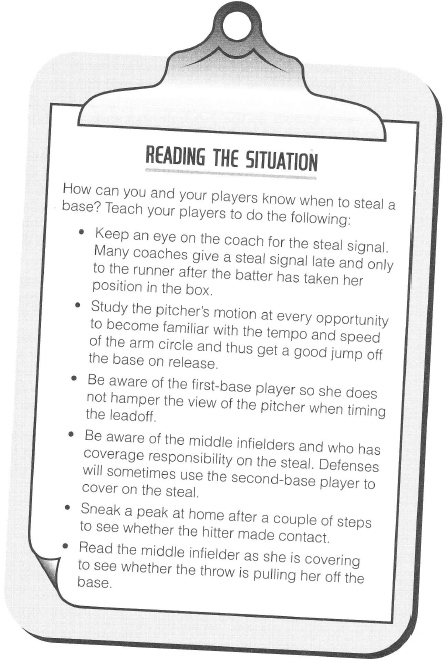|
Stealing a Base by American Sport Education Program
WATCH OUT!
ACQUIRING THE APPROPRIATE KNOWLEDGE Rules
DELAYED LIVE BALL STEAL Nonetheless, a delayed live ball steal requires your runner to read the defense, in particular the catcher and the pitcher. You and your players should be aware of several points about the delayed steal:
Decision-Making Guidelines
|
|
|




 t-pitch softball, however, the playing rules largely control the timing of the steal. Runners must remain in contact with the bag until the pitch is released when attempting a steal, so they cannot take an aggressive lead or try to read the pitcher to get a more aggressive jump. Thus when stealing, the key factors to consider are the runner's foot speed, the catcher's arm strength, or glove-to-glove time, and the speed of the pitch.
t-pitch softball, however, the playing rules largely control the timing of the steal. Runners must remain in contact with the bag until the pitch is released when attempting a steal, so they cannot take an aggressive lead or try to read the pitcher to get a more aggressive jump. Thus when stealing, the key factors to consider are the runner's foot speed, the catcher's arm strength, or glove-to-glove time, and the speed of the pitch. 


